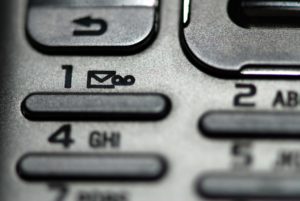Premise-based PBX phone systems are no longer the go-to option for businesses like yours. There are various reasons why failing to upgrade to a cloud-based phone system from an on-premise PBX phone system can significantly hinder your business.
Some of the disadvantages of using a PBX phone system include restrictions on customer service, increased downtime, and a limited amount of features.
Disadvantages Of PBX Phone Systems
The majority of consumers who are searching for products and services on a daily basis will prefer to communicate with a company that has a reliable and strong customer service. Does your current PBX phone system have the ability to answer some of your most important customer service questions?
How many times does one question need to be transferred?
How long does a customer have to wait on hold?
Do customers ever end the phone call because they were tired of waiting on hold or being constantly transferred?
If you are using a premise-based PBX phone system, you may not be able to find the answers to any of the above questions. You are likely not getting the type of features and resources you can get from a cloud-based phone system. When you use a cloud-based phone system, you will be able to use features like call recording, queue management, call reporting, etc.
Another disadvantage of an on-site PBX phone system is the high amount of downtime. When your PBX phone system fails, this means you will have to wait for your provider to arrive at your workplace to repair the problem. There is no guarantee that the provider will be able to repair the problem the same day. If your system is down, you will not be able to take phone calls or receive phone calls. No one wants to go through this as a business owner or manager, right?
When you use a VoIP phone system in your workplace, you will have a system that has been securely established. You will be able to use the same type of service that police officers, emergency responders, and other emergency services use. If a cloud-based phone system has been beneficial and reliable for them, we think this system can be the same for you.
If you have been looking for ways to cut some of your business’s unnecessary costs or if you have been looking for ways to improve conferencing and other communication methods, you may want to think about making the switch to a cloud-based phone system. Switching to a cloud-based phone system can become one of the best communication solutions your business has ever made.
We know you will not want to deal with complications, stress, and headaches in your workplace on a daily basis, right? We think you deserve to have a telecommunications system that will allow you to work easily and effectively.
When you have a cloud-based phone system, you will not have to be bothered with the constant technology talk and the blaming of who caused damage to the system. When you have a problem when you are using a cloud-based phone system, the only thing you will need to do is call the support number of your cloud-based phone system provider. After you make the phone call, a professional will handle any issue that you may have. You will not have to worry about downtime or unnecessary costs on repairs that could have been avoided.
On-site PBX phone systems were once the only option for businesses to use. Since this is no longer the case, don’t you think it is time for you to see how a cloud-based phone system can contribute to the current and future success of your business? Contact us today for a consultation.
Monthly Archives: July 2018
The Benefits of Voicemail to Email
Voicemail is an important part of business communication, but it can be a nuisance to manage. Why should you have to replay all your messages to find the one you need to hear again? What do you do if you press the wrong key and accidentally delete an important message? The good news is that there’s a VoIP feature that lets you receive all your voicemail in your inbox. This feature, logically, is called voicemail to email.
Messages in your inbox
When you enable the feature, your VoIP system forwards each message to your inbox as an audio attachment. The subject line and text will tell you when it arrived, what number, and the caller’s name if it’s available. You can choose to delete messages from your voicemail automatically when they’re sent, or to leave them there. Leaving them gives you extra flexibility, but auto-deletion guarantees your voicemail will never be full.
Once the messages are in your inbox, you can employ all the tools that are available for managing email. You can sort them into folders, mark them as high-priority, and forward them. You can set up filters to highlight messages from some callers and mark others as spam.
Sometimes an old voicemail message is the only place you have an important piece of information, such as a caller’s phone number. Being able to get back to it easily can save a business deal.
The limit on your messages is only the limit on your inbox. That’s usually a very generous cap, but voice attachments are large, so you may need to delete or archive old messages.
Messages as audio files
The attachment holding the voice message is an audio file, usually in MP3 or WAV format, so you can treat it as an independent file. This is useful for archival purposes. You can save the attachment as a file, delete the message from your inbox, and have a permanent record. This way you can save as many messages as you want, organizing them into folders using any scheme. For instance, you can save all voice messages from a supplier and save having to ask questions they’ve already answered.
Transcription to text
You can choose to have the VoIP system put a text transcription of each message into your email. This will save time when reviewing your messages, especially if you’re in a noisy environment where it’s hard to make out what the caller said. Copying down phone numbers while listening to voicemail is seriously annoying. Having the number in the transcription is much easier.
Not all voice transcriptions will be equally useful. If the signal-to-noise ratio is poor, the transcription could be spotty. Even so, it will often give you enough of the message to tell whether it needs your immediate attention or not. Sometimes the transcription could even pick up words that you have trouble identifying.
Extra convenience
Letting your VoIP service send your voicemail to your email makes the messages far more convenient to handle. All your communications are in one place. You can review the messages at your desktop as well as your phone.
If you know your associates are using voicemail to email, you can be more confident that they’ll get your voice messages and notice them. People are apt to ignore or lose messages on their phones, but if they’re getting them in email, they’ll pay more attention to them, and you’re more likely to get a response on the first try.
SystemsNet offers hosted PBX and VoIP, with features including conferencing, auto attendants, “follow me,” voicemail to email, and much more. Contact us to learn how you can have a better business phone system.
Six Ways Backups and Data Recovery Can Save Your Business (Part 2)
Welcome back to the second half of our two-part article on backups and data recovery as an incredibly versatile set of solutions. The beauty of building a layered and comprehensive set of backups with smooth recovery procedures is the ability to recover from almost any setback that even remotely relates to your files. Last time we talked about a few of the often unconsidered risks to your files like failed software updates, failed services, and employee mistakes. These less flashy but far more common risks can put any file system at risk if there’s no way to restore mistakes and failed processes. Backups allow you to restore files back to a previous whole and working state. Automated backups can also help you track down exactly when and why a file corrupted or was changed. Let’s pick up where we left off at how backups can be used to quickly recover from and completely shrug off ransomware attacks.
4. Ransomware Attacks
The current generation of hackers have a personal favorite form of attack that not only ruins your day but also has a chance of getting them paid. You’ve probably heard of ransomware in the recent news because it has been used to terrorize a large section of the computer-using population world-wide. While the exact programs evolve like the yearly flu, the method involves infecting your network, maliciously encrypting every file, then demanding ransom payment in crypto-currency. Rather than paying them or losing your files, you can simply wipe the network and implement your data recovery procedures from a recent complete backup. This method also works for almost any other kind of malicious virus, spyware, Trojan, or malware attack.
5. Programming Errors
When programmers and the IT department make mistakes, the consequences often have a much greater effect than the mistakes of a single employee on their personal system. In many cases, a change to the way the company network or proprietary programs work can cause an error left undetected for days or weeks at a time. Here is where having a collection of regular backups is incredibly helpful. No matter how far back the error was made, a good data recovery system can restore the system to its pristine state before the oversight, allowing your team to fix the problem without a massive loss of data.
6. Device Failure
No matter how convenient remote servers and huge hard drives are, there is one final fact about computing that many people forget. Computers are physical objects and data is stored on disks that can break, fry, melt, warp, scratch, or otherwise become unreadable and unusable. While there are extensive recovery procedures that can sometimes extract data from dead equipment, you can be back to work almost instantly by loading a recent backup onto a new machine and reinstalling it into the company network in the old computer’s place.
The data used, processed, and stored by your company is important for continued functioning and any loss of data can set you back by days, months, or even permanently depending on the value and replicability of the data. Fortunately, there’s no need to risk losing your valuable digital assets, because even software installations and settings configurations can be saved. With a complete data recovery plan, you can restore a single document from backup or reinstall an entire computer after a malware attack, and clone a computer with all its data for new team members. Cloud-hosted backups are an important part of a comprehensive business continuity plan as they can be used both for asynchronous disaster recovery and for hot-loading a second environment while the first is repaired.
For more information on backups and cybersecurity, contact us today!


